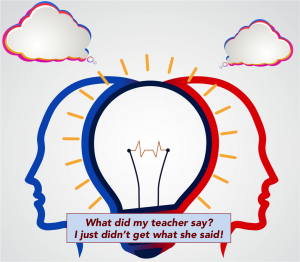
An informational blog for parents, teachers, students and those interested in current trends in thinking and learning
 Blog Focus: A Year in the Life of a First Grader (Who is An Unconventional Learner)
Blog Focus: A Year in the Life of a First Grader (Who is An Unconventional Learner)
During the 2015 – 2016 school year I will be following my little friend Jimmy’s experiences in 1st Grade. Jimmy’s Mom left him at his new school today with a big smile on his face and walked away with a lump in her throat. Her biggest hope is that her son will have a good year…just like all mothers across the country! Only, for her, she is keenly aware that Jimmy faces some challenges in school that her first son did not have to overcome.
Last year during Kindergarten, Jimmy’s mother noticed that he was having trouble focusing, becomes overwhelmed by multiple items on a page, listening, sitting still, following directions, and completing assignments on time. While Mom realized that Jimmy was still only a Kindergartener, his actions seemed to require more effort than his classmates (or his older brother at the same stage). Jimmy was quite verbal and alert but seemed to be unconventional in how he learned and expressed his ideas to others. A side effect of his unconventionality in how he learns was that Jimmy would squirm, not focus, and seemed to avoid completing his work, which often manifested itself as behavior problems. Jimmy thought that he did not have any friends and that he “hated” school. The strange thing is that before he entered formal schooling Jimmy was curious and very talkative. In fact, his vocabulary and thought processes seemed above his age. He was a happy kid that thought he was a “super hero”…no problem!
Sound familiar? The number of kids entering school today that are not sure they have the right stuff is huge. These kids look and sound normal, but something is going on that is not quite right. Learning to read may present major challenges for them! The key is getting help early in order for these children to grow up embracing who they are and having the skills and confidence to succeed in school and in life.
 Background & Impact:
Background & Impact:
Jimmy’s mom is the angel on his shoulder. She recognized subtle signs of issues, which caused Jimmy to act out at home and school that raised a red flag for her. As a former teacher, she understood that sometimes kids’ actions are the road map to finding out what is going on inside them. So, she set more time aside to work and play with him at home to give him the little boost that she thought would help him. However, Jimmy seemed to become more moody and unhappy as the school year progressed. His confidence was very low and mom noticed that if Jimmy was asked to do near-point work as in reading or writing, he began to act silly or obstinate to get out of completing the task. “Pay attention” was a commonly used phrase.
Mom knew his vision (acuity) was okay because she had it checked before he entered Kindergarten. Nevertheless, in the Spring she decided to have his vision checked by a vision therapist to see if he had trouble visually processing and/or interpreting what he was seeing, both at home and in school. This began a journey to help Jimmy get back on track.
The vision specialist found that Jimmy did indeed have visual processing issues. His eyes did not work together well and he tended to have a “lazy” left eye. The vision therapist prescribed special glasses, vision exercises (including large and small movement exercises) and using a See-N-Read® Reading Tool when reading. He is now visiting the therapist every three months to check on his progress. It has only been a few months and Jimmy is clearly progressing, despite some frustrated (and frustrating for Mom) moments. The goal is to gradually improve Jimmy’s eye control and coordination so he will be able to more easily complete near-point work. Just as importantly, he needs help to understand that he processes differently from his friends, but that he can process and learn!
The diagnosis helped to explain why Jimmy was confused or overwhelmed by multiple pictures or activities on a page, had trouble completing his assignments on time, has “messy” writing, was less coordinated and seemed a bit clumsy. Each of Jimmy’s visual issues were not extreme but, taken together, they were beginning to negatively impact Jimmy’s performance and, more importantly, his confidence. AND, all this has happened while Jimmy is still in Kindergarten!
 Getting Your Ducks in A Row:
Getting Your Ducks in A Row:
Jimmy’s mom took the proactive path to help her son. Armed with the understanding of Jimmy’s visual processing challenges before school began, she made an appointment with Jimmy’s 1st grade teacher to discuss how Jimmy processes information, the actions she was taking outside the classroom and pass on suggestions provided by the vision therapist for helping her son in the classroom. To the credit of Jimmy’s 1st grade teacher, she was very open and appreciated mom coming in to talk with her about Jimmy. Now, both mom and Jimmy’s 1st grade teacher are working together toward helping the new school year be a happy and successful experience.
 “No-Shame Processing™”:
“No-Shame Processing™”:
“No-Shame Processing™” is an approach to thinking and learning that acknowledges all forms of processing and prepares learners to understand how they learn and to grow a sense of confidence in who they are and in their individual learning processes.
Statistics tell us that a significant number of students are struggling to be successful in school. These students, and often their parents, know that something is not quite right, but are at a loss as to why they have such difficulty learning, especially in the area of reading fluency and comprehension. Some human brains process differently, but they do indeed process information. Learning does take place. The key is to recognize and understand that there is more than one type of processing. “Different” does not equal “bad”. “No-Shame Processing” is a critical concept to understand in order for many learners to successfully break through the learning curve and learn to read.
Parents! Do you (or your child) have trouble following verbal instructions? Need more time to visually process information on a black board or electronic white board because the words/pictures get mixed or jumbled together as a colleague (teacher) talks? Would you like to ask questions but cannot seem to collect your thoughts in a timely manner? Well, you are not alone! Your brain may be processing information in a slightly different…or a very different… manner than your peers. You know you can learn, but you have probably figured out that you have to use “workarounds”; i.e., modify how you function in a traditional environment (e.g., a classroom). The key here is not to stop trying, but to be okay with and actually use your individual information processing style. If kids are facing these same issues, they don’t yet have the experience to develop these “workarounds”. Taking a few basic steps to replace that experience can be a great benefit.
 Next Steps:
Next Steps:
Unconventional learners™ are not rarities in our school systems; they exist at every intellectual capability level in virtually every classroom at every grade level. These students are not disabled, they are unconventional learners hidden under the mass of conventional curriculum: the rush to complete material on a schedule for the entire class, unbending application of standardized assessment rules in our schools, large class sizes, etc. These students are hidden because their performance levels are not low enough to qualify for an individualized education plan (IEP); they do enough to get by or they figure out workarounds so the system does not even notice, let alone adjust to, their unconventional learning processes.
Jimmy is just such an unconventional learner. He is a smart child…but he does need support to understand how he learns and tools to help him perform at his best.
Please check back with us throughout this school year as we chronicle Jimmy’s first grade year in school.
**In our next blog posting, I will share different tips and techniques that can be used by unconventional learners to improve their processing and help them to retain information.**
 Thought Questions:
Thought Questions:
Have you or do you have children who struggling with reading or comprehension but in the larger scheme of things function well in day-to-day activities? Yet…there is a little voice that negatively impacts your confidence because you read slowly, have difficulty remembering things, or feel like you are fooling everyone around you? If you have figured out “workarounds” that have helped you to overcome learning challenges please let us know. Share your tips with us and it may help others…
Let me know your thoughts or share your situation…join the conversation and check back for upcoming blog topics on thinking and learning.

Think and Learn Every Day









